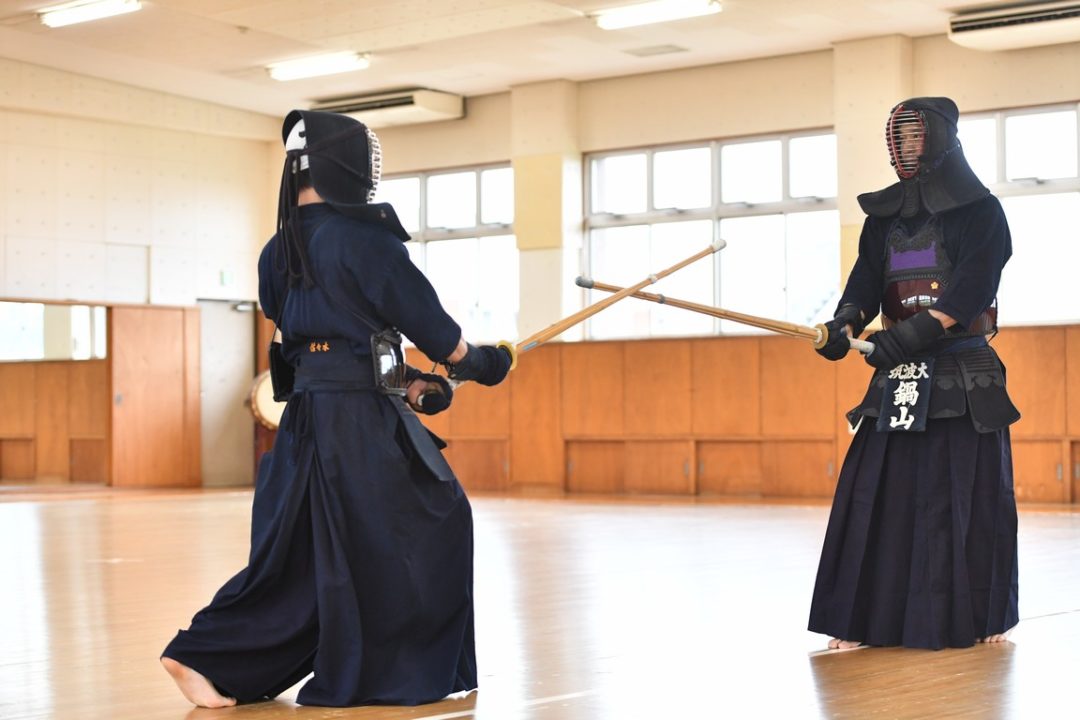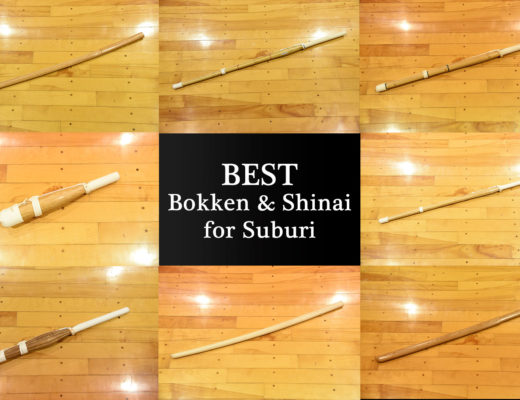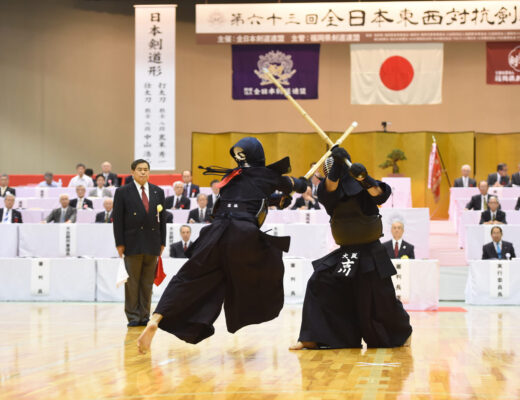2017.9 KENDOJIDAI
Simply pointing Kensaki at the center of the opponent is not the same as taking the center line. To make use of the Kensaki for Seme and striking, Nabeyama Sensei explains it is necessary to perform a comprehensive choreography. Apply Seme through Men techniques, not through single lines. We asked him how to put pressure on the opponent with the whole body.

Nabeyama Takahiro, Kyoshi 8th Dan
Born in 1969 in Fukuoka prefecture. Started Kendo at Imajuku Kendo club, graduated from PL Gakuen High School and Tsukuba University. In his student days, he attained brilliant achievements such as 1st place in Inter-High Individual & Team competition and All Japan Student Team championship. After graduating from university, he took the path of researcher through the graduate school of the same university. Participated multiple times in the All Japan Kendo Championships, twice in the WKC and took the title in the All Japan Teachers’ Championships. Currently, Nabeyama is associate professor of physical education at the Tsukuba University and men’s coach of the Tsukuba University Kendo Club.
When I was in high school at PL Gakuen, I was thinking about the center line, but my teacher at the time, Kawakami Sensei, thoroughly instilled in me the principle that “straight is the fastest”. As for the offensive teachings, there was no such thing as a strategy of overpowering the opponent or finding opportunities through interaction.
All we had to do was, “straightforwardly strike the opponent as he comes in”. It was just a matter of the positioning of the left foot and the fact that we strike from farther away than the opponent, before his Uchima. For example, we had to do Keiko on Men strikes with the Kensaki at a maximum of about 50 cm away from the opponent’s Kensaki.
I was taught how to use my left leg to that extent. On the other hand, it was very strict for those who did not do Keiko in a straight line. Now, when I’m a teacher and I’m showing my students how to use their left leg, I think I owe that to a strong foundation to be able to do so.
I think beginners are often taught not to step back. When you move back, you lose the proper force to your left foot and you are not in a strike position, hence why they say that. Of course, it is not good to step back but I think it is preferable to raising your hands and moving your Kensaki away from your opponent. I think it’s better to keep it centered and use footwork to avoid opponent’s strikes.
Nabeyama Sensei is doing Keiko with a student. Rather than using only the Kensaki to deal with the opponent’s strikes, he uses his feet in all directions and becomes one with his feet, and naturally suppresses his opponent’s Shinai
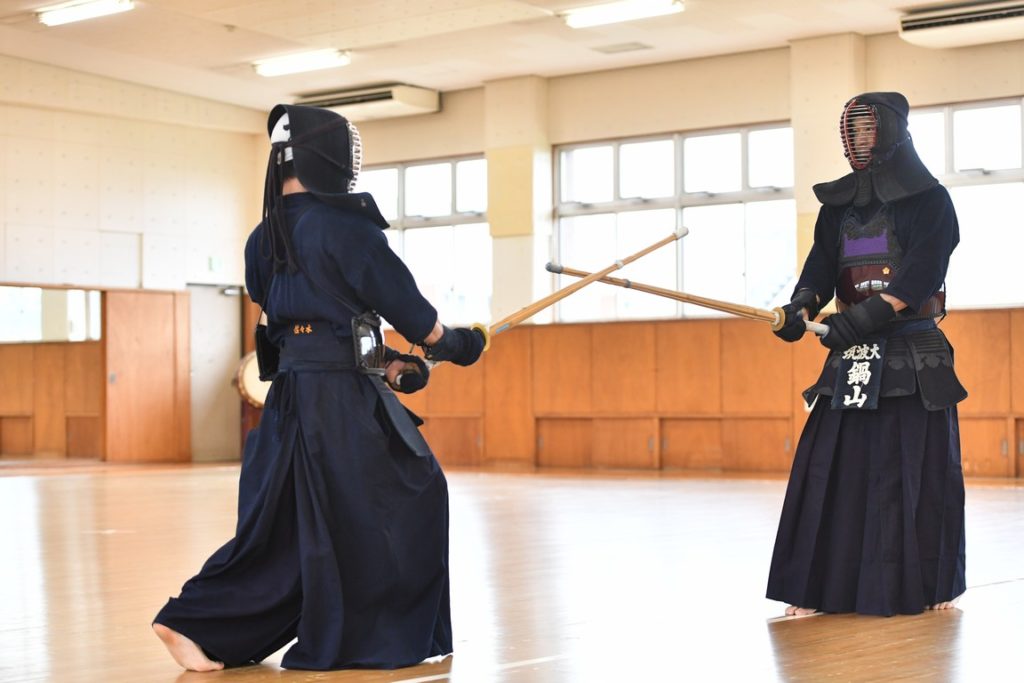
On the other hand, when I was in high school, I still feel that I always had my left foot prepared even when going backwards. I learned this under the guidance of Yamauchi Masayuki when I was in elementary and junior high school. I think this gave me strength. Even when I was pulling back, my left leg was still in place, so I was able to strike when my opponent thought I was going to go back and attacked me.
Kawakami Sensei didn’t scold me, saying, “You’ve gone backwards”. He told me not to back off, but if I was prepared properly, he wouldn’t make an issue of it. I think that is amazing about him.
Being aware of always being able to jump is a difficult thing to do, but I think we should do it. Top-class high school players come to our university, but there are still few students who are able to do so. They are not in a position to hit after dodging.
Rather than raising your arms, I think it is more beneficial to pull back while in Kamae and a prepared left foot to strike. It also enables you to keep the center line. If you raise your hands easily, you won’t be able to build up your game.
On the other hand, it’s not easy to get the center line against an opponent who is stronger than you. Of course it’s important to train hard to break through with the so-called Kakari Keiko. However, there are times when doing so can be disadvantageous to your performance in Shiai.
The center line creates pressure in the build up
Let’s say your opponent is in Jodan, where do you think the center line is? You cannot take the center line with an open Kensaki against Jodan.
Therefore in my case, taking the center line is not a physical thing but rather a form of pressure which results from the complete choreography. It is not only about the position of the Shinai in Kamae but also the image of Seme through Men strikes. I think that when the opponent feels he is about to be struck, it is Seme. I think of taking the center line, which is a commonly used term, as a manifestation of this.
When I was around 20 years old, I practised Shiai with Miyazaki Masahiro Sensei of Kanagawa Prefectural Police. When he came in strong, I would block. If he lightly suppressed my Shinai, I would try to retake my position. Miyazaki Sensei was really good at suppressing the shinai in an exquisite way. Right when I was trying to figure out what he was going for, he came for Men and I was defeated, unable to do anything about it.
I remember to this day, thinking “so this is what it meant to take the center”. Therefore, I am not so much attached to the idea of taking the center line by strongly suppressing the opponent’s Shinai with my Kensaki. Sometimes students tell me “Sensei, your Kamae is scary”. When I respond by standing in Kamae three meters apart from them and asking them, “is this scary?” the students reply “no”. Therefore, the fear comes from approaching them and making them feel they can be struck.
I think that within Seme, this is where the center line is truly effective. The extent to which we can manifest the feeling of our opponent getting struck will lead to Seme. That’s why we place value on the positioning of our feet and Kensaki.
The center line should not only be positioned in the center of the opponent, but also be part of a comprehensive choreography
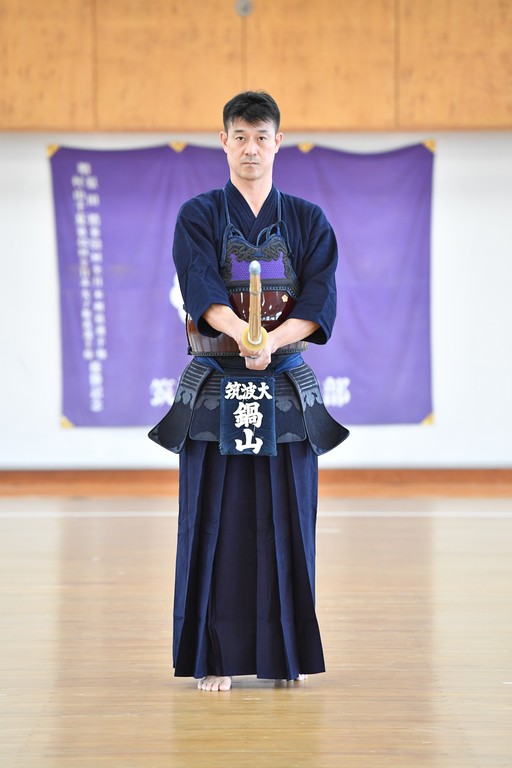
The rest of this article is only available for Kendo Jidai International subscribers!

